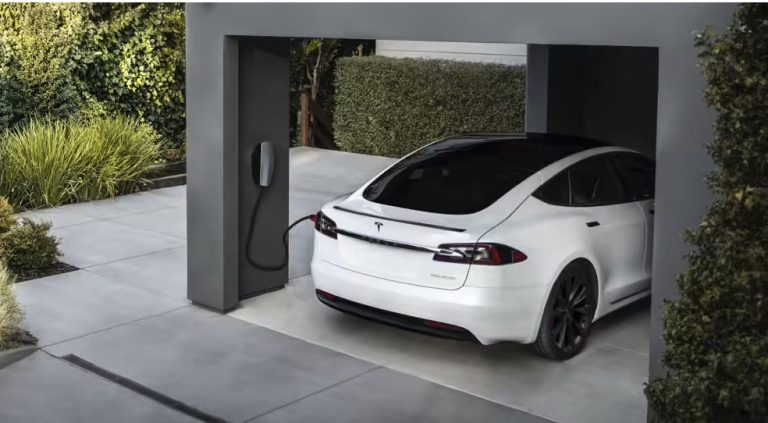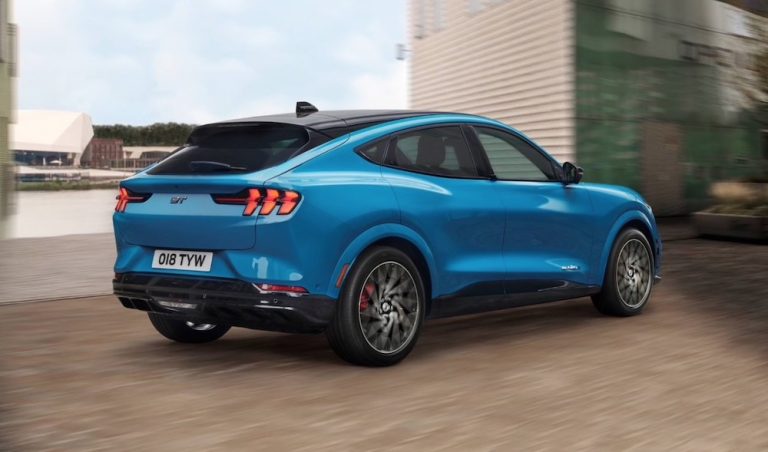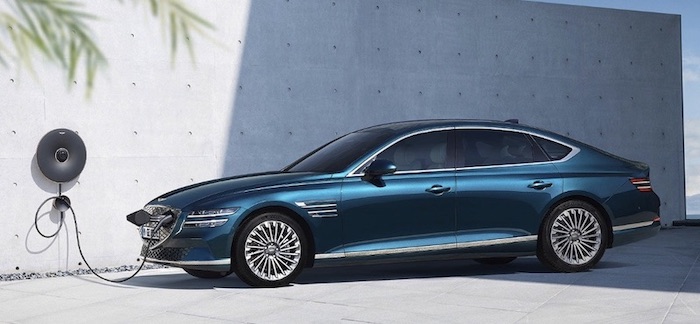Electric Cars: The Basics
For those of you new to zero-emission electric driving, we recommend a read of the following articles:
Sign up to the e-zoomed Electric Living newsletter
The All-Electric Genesis GV60 SUV
Genesis Motor, LLC, though a brand not well known in Ireland, is part of the Hyundai Motor Company, the behemoth South Korean automotive manufacturer. The Genesis brand became an independent luxury marque in 2015. Genesis has currently on offer a number of conventional internal combustion engine (ICE) vehicles and electric vehicles (EVs). However, the company has announced its intention to only develop electric vehicles (EVs) from 2025. Genesis currently has the following EVs on sale:
The all-electric Genesis GV60 competes in an already competitive landscape of premium pure electric luxury SUVs. A segment led by well recognised premium automotive brands, like, Audi, Mercedes, Volvo, Jaguar and more! Though the luxury GV60 crossover has much to offer, only time will demonstrate if consumers are willing to pay a premium price tag for the relatively unknown Genesis brand. The ‘G’ in the model name stands for Genesis, while the ‘V’ stands for versatility.
Genesis is well aware of its need to offer something unique to gain traction in a competitive market. As an example, the company is offering a 5 year Care Plan, which includes: servicing, warranty, roadside assistance, OTA (over-the-air) software updates and more. The automotive manufacturer is keen to stress its ‘customer centric approach’ to selling cars. But of course, it is not the only automotive manufacturer with such an approach!
Review commentators like WhatCar? seem to think the EV has a winning recipe. According to WhatCar?, “Genesis has created a truly game-changing car.” Let’s hope the consumers also have a similar view! The GV60 was revealed in August 2021. It is the first battery-electric vehicle (BEV) from the company to be developed on a dedicated EV platform, the E-GMP (Electric-Global Modular Platform). In fact, it is the same platform used by Hyundai and Kia to develop the all-electric Kia EV6, all-electric IONIQ 5 and all-electric IONIQ 6.
For those new to electric driving, electric cars developed on a non-dedicated EV platform always have compromises i.e. EVs developed on a platform shared with internal combustion engine (ICE) petrol and diesel vehicles. Some of these compromises include: less efficient use of internal cabin space, compromise in interior layout, compromises in exterior design and lower overall efficiency of the electric vehicle (EV).
Similar to the all-electric GV70, the GV60 electric also incorporates a 77.4 kWh onboard EV battery with a claimed range up to 470 km (WLTP). Though not class-leading, certainly a useful and practical pure electric range. In comparison, the IONIQ 6 has a range up to 614 km (WLTP), while Kia EV 6 has an emission-free range up to 528 km.
For the GV60 electric, expect a real-world electric range closer to 400 km on a full charge. Useful for city and motorway driving! For those new to electric driving, it is worth noting that many factors influence the real-world electric car range. Some of these include: driving style, temperature, elevation, wind, rain, road surface, tyre size, onboard services used etc.
The GV60 offers DC charging capability up to 350 kW DC. This is certainly class-leading and a must, given the premium price tag. The EV can be charged from 10% to 80% in 18 minutes using a 350 kW DC charger. At the more commonly found 50 kW DC charger, the GV60 can be charged up to 80% in 73 minutes.
Of course, for most electric car owners, the EV is usually charged overnight, at home. The EV incorporates a 11 kW AC onboard charger as standard. Charging the e-SUV to 100% via a dedicated three-phase EV charger, like myenergi zappi will take up to 7 hours and 20 minutes. However, as most homes in Ireland are restricted to single-phase power supply, the EV will take longer to charge.
We at e-zoomed recommend a ‘topping up’ approach to charging an electric car. It is better for the long-term maintenance of the onboard EV battery. Genesis offers a 8 years or 160,000 km warranty. We also recommend combining an on-site PV system and battery storage, to truly leverage the benefits of zero-tailpipe emission electric driving.
The EV incorporates a heat pump as standard. Heat pumps for electric cars is another ‘efficiency enhancing’ innovation fast gaining acceptance by automotive manufacturers. At the core, it works on the same principle as regenerative braking, in that, it captures ‘waste energy’, to be re-used (recycled) for improving e-range. We can continue to expect automotive manufacturers to develop new technologies based on ‘recycling’, as any form of transport will always have inefficiencies (waste) that can be re-used!
The GV60 also has a host of safety features and onboard technology, though not all as standard equipment. Some of these include: 12.3-inch TFT LCD cluster, crystal sphere (SBW), ambient mood lighting, 10 airbag system, lane keeping assist, high beam assist, driver attention warning, forward collision-avoidance assist, blind-spot collision-avoidance assist, intelligent speed limit assist, fingerprint authentication system, face connect and more!
Genesis claims that the face connect is the first of its type, which uses facial recognition to unlock the vehicle door. The EV also offers vehicle-to-load (V2L).
The Genesis EV is available as a 2WD and a 4WD. The all-wheel drive (AWD) options is available in two variants, the GV60 Sport and the GV60 Sport Plus. The GV60 Sport delivers maximum power up to 318 PS (605 Nm torque), and the GV60 Sport delivers maximum power up to 490 PS (700 Nm torque).
The Sport Plus incorporates boost and drift modes for more dynamic driving. The boost mode delivers 10 seconds of maximum power and acceleration (0-100 km/h: 4.0 seconds). The entry-level GV60 rear-wheel drive (RWD) delivers maximum power up to 229 PS (350 Nm torque). The top speed is 235 km/h.
We can expect the Genesis brand to become more recognised across Ireland and a number of international markets, as Chinese automotive manufacturers, like Genesis increase their efforts to gain greater market share of the fast developing EV market. In any case, the greater the competition, the better is the end result for consumers: more choice and lower prices!
Bottom-line, electric driving is good for the environment and the wallet!
| PROS | CONS |
|---|---|
| Available as RWD and AWD | Relatively unknown brand |
| Decent electric range. DC charging up to 350 kW DC. Three-phase 11 kW AC onboard charger | Premium price |
| Built on a dedicated EV platform | AWD not standard on all variants |
The All-Electric Genesis GV60 SUV (credit: Genesis)
| At A Glance | |
|---|---|
| EV Type: | Battery-Electric Vehicle (BEV) |
| Body Type: | SUV |
| Engine: | Electric |
| Available In Ireland: | No |
| Variants (3 Options) |
|---|
| Genesis GV60 Premium (from € N/A) |
| Genesis GV60 Sport (from € N/A) |
| Genesis GV60 Sport Plus (from € N/A) |
| EV Battery & Emissions | |
|---|---|
| EV Battery Type: | Lithium-ion |
| EV Battery Capacity: | Available in one battery size: 77.4 kWh |
| Charging: | 350 kW DC rapid charging (10%-80%: 18 mins). Onboard charger 11 kW AC (0%-100% : 7 hrs 20 mins) |
| Charge Port: | Type 2 |
| EV Cable Type: | Type 2 |
| Tailpipe Emissions: | 0g (CO2/km) |
| Battery Warranty: | 8 years or 160,000 km |
| Average Cost Of Residential Charging | |
|---|---|
| Battery net capacity: 16.7 kWh | € 4.00 |
| Battery net capacity: 30.0 kWh | € 7.19 |
| Battery net capacity: 39.2 kWh | € 9.39 |
| Battery net capacity: 45.0 kWh | € 10.78 |
| Battery net capacity: 50.0 kWh | € 11.98 |
| Battery net capacity: 64.0 kWh | € 15.34 |
| Battery net capacity: 71.0 kWh | € 17.01 |
| Battery net capacity: 77.0 kWh | € 18.45 |
| Battery net capacity: 90.0 kWh | € 21.57 |
| Battery net capacity: 100.0 kWh | € 23.97 |
- Note 1: The average cost of residential electricity in Ireland varies depending on the region, supplier and type of energy used. An average for Ireland is 23.97 cents/kWh.
- Note 2: Not all EV manufactures make available the data on net EV battery capacity, and in a number of instances the EV battery capacity advertised, does not state if it is gross or net capacity. In general, usable EV battery capacity is between 85% to 95% of the gross available capacity.
| Charging Times (Overview) | |
|---|---|
| Slow charging AC (3 kW – 3.6 kW): | 6 – 12 hours (dependent on size of EV battery & SOC) |
| Fast charging AC (7 kW – 22 kW): | 3 – 8 hours (dependent on size of EV battery & SoC) |
| Rapid charging AC (43 kW): | 0-80%: 20 mins to 60 mins (dependent on size of EV battery & SoC) |
| Rapid charging DC (50 kW+): | 0-80%: 20 mins to 60 mins (dependent on size of EV battery & SoC) |
| Ultra rapid charging DC (150 kW+): | 0-80% : 20 mins to 40 mins (dependent on size of EV battery & SoC) |
| Tesla Supercharger (120 kW – 250 kW): | 0-80%: up to 25 mins (dependent on size of EV battery & SoC) |
- Note 1: SoC: state of charge
| Dimensions | |
|---|---|
| Height (mm): | 1580 |
| Width (mm): | 1890 |
| Length (mm): | 4515 |
| Wheelbase (mm): | 2900 |
| Turning Circle (m): | N/A |
| Boot Space (L): | 432 |
| GV60 EV | |
|---|---|
| EV Battery Capacity: | 77.4 kWh |
| Pure Electric Range (WLTP): | 470 km |
| Electric Energy Consumption (kWh/100km): | 17.0 – 19.1 |
| Charging: | 350 kW DC rapid charging (10%-80%: 18 mins). Onboard charger 11 kW AC (0%-100% : 7 hrs 20 mins) |
| Top Speed: | 235 km/h |
| 0-100 km/h: | 4.0 seconds (Boost Mode) |
| Drive: | Rear-wheel drive (RWD)/ All-wheel drive (AWD) |
| Max Power (PS): | 229 – 490 |
| Torque (Nm): | 350 – 700 |
| Transmission: | Automatic |
| Seats: | 5 |
| Doors: | 4 |
| Kerb Weight (kg): | 2,145 |
| Colours: | 14 |
| NCAP Safety Rating: | N/A |
Vehicle-to-Grid (V2G): An Introduction
V2G is an innovative bidirectional technology that allows the onboard EV battery to be charged and discharged i.e. electrical energy to be exported/ discharged from the onboard EV battery to the grid via a V2G compatible EV charger. It also allows for vital informational flow (data) to the grid. In effect, the V2G technology allows an EV battery to be used as a grid-connected energy storage unit.
| Benefits: V2G | |
|---|---|
| Lower energy costs: | V2G can lower utility costs to include, lowering wholesale and retail energy costs |
| Improving the grid’s response ability: | V2G can improve the stability of the intra-day supply and demand needs, improving the grids ability to meet the needs of peak demand |
| Improving power quality: | V2G can improve power quality by controlling voltage and power factors |
| Increase resilience: | V2G can improve the resilience of the grid and electricity network in significantly adverse conditions |
| Increase use of renewable energy: | V2G enables an increase in the contribution of renewable energy to the national energy generation mix. The higher the contribution of RE, the greener the power supplied |
| Reduce cost of EV ownership: | V2G can reduce the cost of EV ownership by enabling EV owners to earn from exporting energy to the grid |
| Improves national energy security: | V2G can improve the national energy security of a country by reducing dependence on imported energy |
| Improve environmental impact: | V2G can improve the environmental impact of energy usage and transportation by reducing the dependence on fossil fuels |
While e-zoomed uses reasonable efforts to provide accurate and up-to-date information, some of the information provided is gathered from third parties and has not been independently verified by e-zoomed. While the information from the third party sources is believed to be reliable, no warranty, express or implied, is made by e-zoomed regarding the accuracy, adequacy, completeness, legality, reliability or usefulness of any information. This disclaimer applies to both isolated and aggregate uses of this information.





























